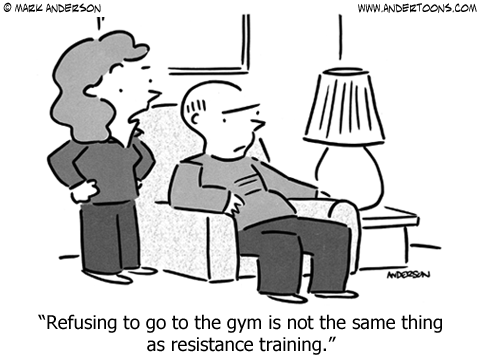 Basal Medabolic Rate Calculator
Basal Medabolic Rate Calculator

Determining Basal Metabolic Rate for Healthy Weight Management
- Guide Authored by Corin B. Arenas, published on September 14, 2019
Achieving a healthy weight means more than just losing pounds. Aside from shedding excess fat, it's important to maintain muscles as you age.
After 30, adults start to lose 3% to 5% of muscle mass per decade.[1] This significantly lowers the body's resting metabolism, which makes people prone to weight gain and age-related diseases.
But the good news is you can calculate your basal metabolic rate. Apart from tracking your metabolism, it allows you make smarter weight management strategies. To get started, read on to learn more.
What is Basal Metabolic Rate (BMR)?

Basal metabolic rate (BMR) is the amount of energy the body burns to accomplish basic life functions. This includes breathing, blood circulation, cell production, and nutrient absorption.
BMR is often used interchangeably with Resting Metabolic Rate (RMR), which is the number of calories the body burns while at rest. RMR slightly differs from BMR, with RNR including energy expended by simple daily movements. Healthline states RMR should still be an accurate estimate of the body's BMR.[2]
Metabolism refers to all physical and chemical bodily processes that convert or expend energy.[3] This includes bodily functions such as:
- Blood circulation
- Respiration
- Body temperature regulation
- Muscle contraction
- Waste elimination
- Brain and nerve functions
How is BMR related to muscle mass? BMR typically declines by 1% to 2% per decade after age 20, mostly because of muscle loss, according to research by Dr. Todd M. Manini, program director for Geriatric Informatics at the University of Florida.[4]
Step 1: Calculate Your BMR

Scientists J. Arthur Harris and Francis G. Benedict developed a BMR equation by simply plotting the following information:
- Age (years)
- Weight (pounds)
- Height (inches)
Take note: The formula is just an approximation. The most accurate way to measure BMR is still through a lab test. This requires 24 hours of rest, including 12 hours of fasting and 8 hours of sleep. Only after can a specialist measure your oxygen and carbon monoxide levels to calculate your resting metabolic rate.
The Harris-Benedict BMR formula:
Men: BMR = 66 + (6.2 × weight in pounds) + (12.7 × height in inches) – (6.76 × age in years)
Women: BMR = 655.1 + (4.35 × weight in pounds) + (4.7 × height in inches) – (4.7 × age in years)
For a faster way to get your BMR, use the above calculator.
Look at the example below to see how it's done.
- Age: 30
- Gender: Female
- Height: 62 inches
- Weight: 115.3 lbs.
BMR = 655.1 + (4.35 × weight in pounds) + (4.7 × height in inches) – (4.7 × age in years)
= 655.1 + (4.35 x 115.3 lbs.) + (4.7 x 62 inches) – (4.7 x 30)
= 655.1 + 501.555 + 291.4 – (141)
= 1,448.055 – 141
BMR = 1,307.055
In this example, the woman's basal metabolic rate is 1,307.055 calories per day.
Why is BMR different for men and women?

Body composition is different for men and women. The National Health Services (NHS) states men biologically have more muscle mass, less body fat, and higher bone density compared to women.[5]
Muscles require more energy to maintain compared to fat cells.[6] And the more mass you have, the more energy you need to sustain your body. This means men generally have faster metabolisms or higher BMR.
Taller and heavier individuals typically have higher BMR. It decreases when you lose weight because your body requires fewer calories to burn daily. Likewise, when you gain muscle mass, your BMR will increase because it needs more energy to fuel muscles.
Step 2: Calculate Your Total Daily Energy Expenditure (TDEE)

Once you know your BMR, the next step is to estimate how many calories your body burns each day.
This number is called total daily energy expenditure (TDEE), which reflects the total amount of energy your body burns while working, exercising, and doing all kinds of activities.[7]
In order to closely measure the amount of calories burned, TDEE considers two additional aspects:
- Thermic Effect of Activity (TEA) – Refers to the amount of calories burned during a workout. This includes everything from sitting and standing up to doing intense physical activities. Research suggests TEA accounts for 15 to 30 percent of TDEE.[8]
- Thermic Effect of Feeding (TEF) – Refers to the amount of calories used to digest food. It takes energy to absorb, break down, and store nutrients. Carbohydrates, fat, and protein need different amounts of energy for processing. Protein has the highest thermic effect, while fat requires the least.[9]
Here's how to calculate TDEE:
TDEE = BMR x Activity Level
Take your BMR and multiply it by your activity level, which may be anywhere from sedentary to extra active. Refer to the assigned figures in the activity level chart below.[10]
| Activity Level | Number | Description |
|---|---|---|
| Sedentary | 1.2 | People who work desk jobs and engage in very little exercise or chores. |
| Lightly active | 1.375 | People who do chores and go on long walks/engage in exercise at least 1 to 3 days in a week. |
| Moderately active | 1.55 | People who move a lot during the day and workout (moderate effort) at least 3 to 5 days in a week. |
| Very active | 1.725 | People who play sports or engage in vigorous exercise on most days. |
| Extra active | 1.9 | People who do intense workouts 6 to 7 days a week with work that demands physical activity. |
For instance, let's take the BMR from our previous example, which is 1,307.055. Let's say the person is lightly active, so we'll multiply BMR with the corresponding activity level.
TDEE = 1,307.055 x 1.375
= 1,797.20062
In this example, the woman needs 1,797.20062 calories per day to maintain her present weight at her current activity level. This number tells her just how much calories she can consume a day. If she wants to create a deficit to lose weight, she can eat 100 calories less than her TDEE.
Step 3: Improving Your Metabolism

Knowing your BMR and daily energy expenditure gives you a better idea of how much calories you should burn or consume to lose weight. However, keep in mind that improving your metabolism is essential in maintain a healthy weight. Aside from eating a healthier diet, this means building and maintaining muscle tone.
Can losing weight too fast slow metabolism? Yes, following fad diets and intense calorie restrictive diets can slow down metabolism.[5]
Though a person's metabolism is a combination of many different factors—such as age, genetics, body composition, sex, and hormone levels—a bad diet can influence metabolic rate.
Some crash diets cause the body to break down muscle for energy, which can ultimately decrease BMR. Lower muscle mass and slower metabolism makes people prone to fat gain. This is why people easily gain weight after losing it.
The Best Ways to Boost Metabolism

Do Weight Training
Lifting weights help maintain muscle mass, which decreases when you lose weight. Since muscle is metabolically more active than fat, building muscle can help increase metabolism.[11] Try to do weight training at least two to three times a week. Building muscle will help your body burn more calories even while you're not doing rigorous physical activities.
Engage in Aerobic Exercise
Do intense aerobic exercises like circuit training and high intensity interval training (HIIT) at least twice a week. It can accelerate your metabolism hours after working out. If you prefer low impact exercises, you can do cycling, brisk walking, or swimming. Aim to do at least 150 minutes of aerobic activity a week.
Add More Protein to Your Diet
Studies show eating more protein helps reduce metabolism drop associated with fat loss.[12] Consuming more protein is also proven to help people feel full longer, which keeps them from overeating.[13]
Keep Yourself Well Hydrated
According to the University of Utah Health, dehydration can slow down metabolism.[14] Studies also show drinking more water helps boost metabolism for a period of time by 24% to 30%.[15] Increasing your water intake also helps you feel full, which keeps you from snacking in between meals. To stay hydrated, avoid sweetened beverages and drink more water instead.
Conditions That Can Alter BMR
Many people struggle to lose weight once they reach a certain age. But for others, medical conditions affect their metabolism, which make it harder to lose weight. Some disorders that can slow down metabolic rate are:
- Cushing's Disease (tumor in the pituitary gland)
- Hypothyroidism (underactive thyroid)
- Polycystic Ovarian Syndrome (endocrine system disorder)
The Bottomline
Tracking basal metabolic rate helps you create a customized diet and exercise routine for their body type. It can also help you determine whether you need to make diet adjustments to maintain a healthy physique.
However, BMR is just one factor that influences weight loss. It's best to consult your doctor for professional advice, especially if you have a preexisting condition, before going on a new diet plan.
About the Author
Working as a health writer since 2016, Corin is interested in longevity research and how to improve the quality of human life. She holds a Master’s degree in Creative Writing from the University of the Philippines, one of the top academic institutions in the world, and a Bachelor’s in Communication Arts from Miriam College. Her other feature articles can be read on Inquirer.net and Manileno.com.
References
- https://www.health.harvard.edu/staying-healthy/preserve-your-muscle-mass
- https://www.healthline.com/health/what-is-basal-metabolic-rate
- https://medlineplus.gov/ency/article/002257.htm
- https://www.ncbi.nlm.nih.gov/pmc/articles/PMC2818133/
- https://www.nhs.uk/live-well/healthy-weight/metabolism-and-weight-loss/
- https://www.mayoclinic.org/healthy-lifestyle/weight-loss/in-depth/metabolism/art-20046508
- https://www.verywellfit.com/what-is-energy-expenditure-3496103
- https://www.ncbi.nlm.nih.gov/pubmed/2691813
- https://www.ncbi.nlm.nih.gov/pmc/articles/PMC524030/
- https://www.healthline.com/health/fitness-exercise/how-many-calories-do-i-burn-a-day#calories-burned
- https://www.ncbi.nlm.nih.gov/pubmed/2243122
- https://www.ncbi.nlm.nih.gov/pubmed/23097268
- https://www.ncbi.nlm.nih.gov/pubmed/16400055/
- https://www.health.com/health/gallery/0,,20306911,00.html
- https://www.ncbi.nlm.nih.gov/pubmed/24179891
An Exercise Innovation (or two!)


Change privacy settings
